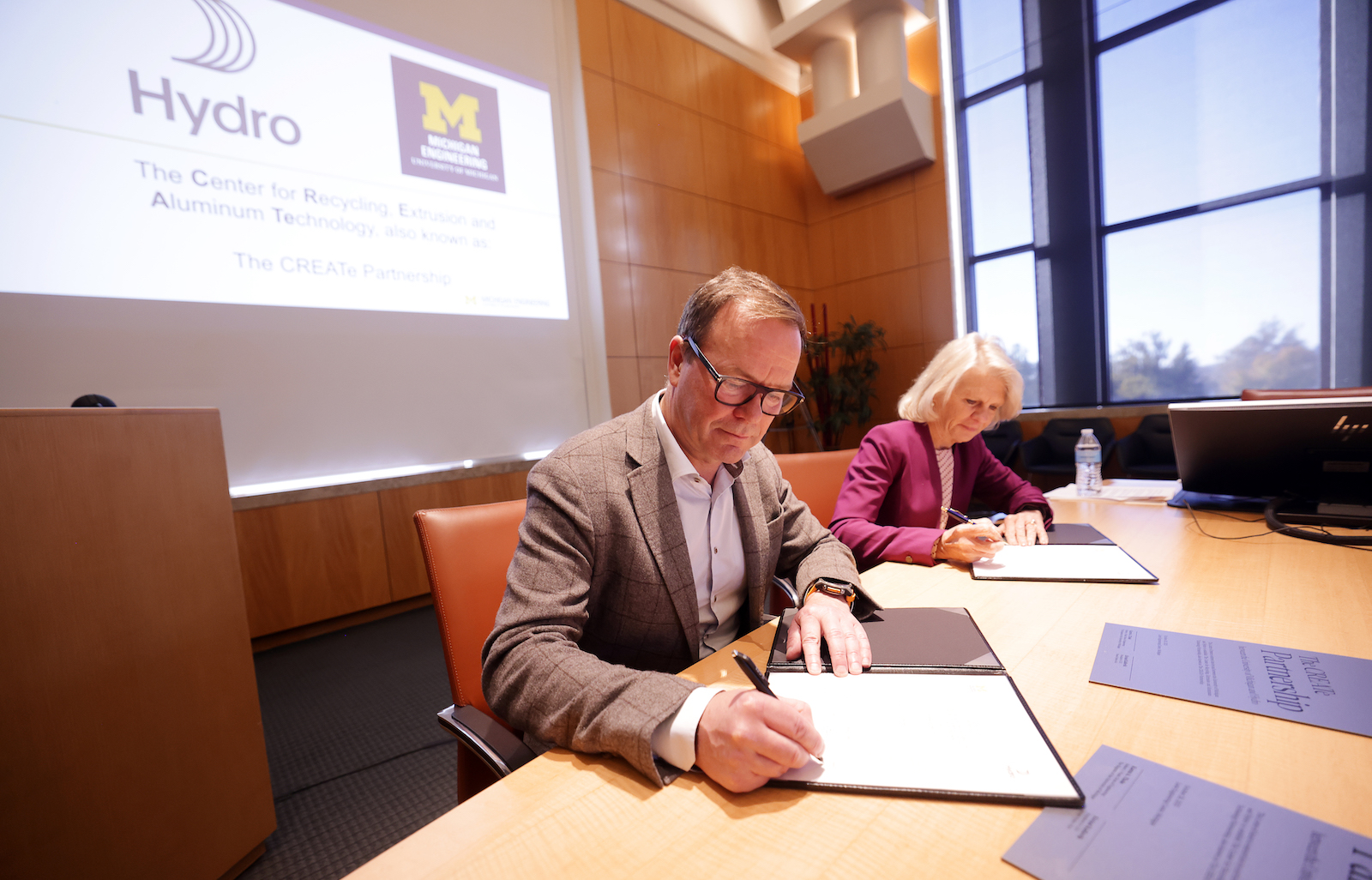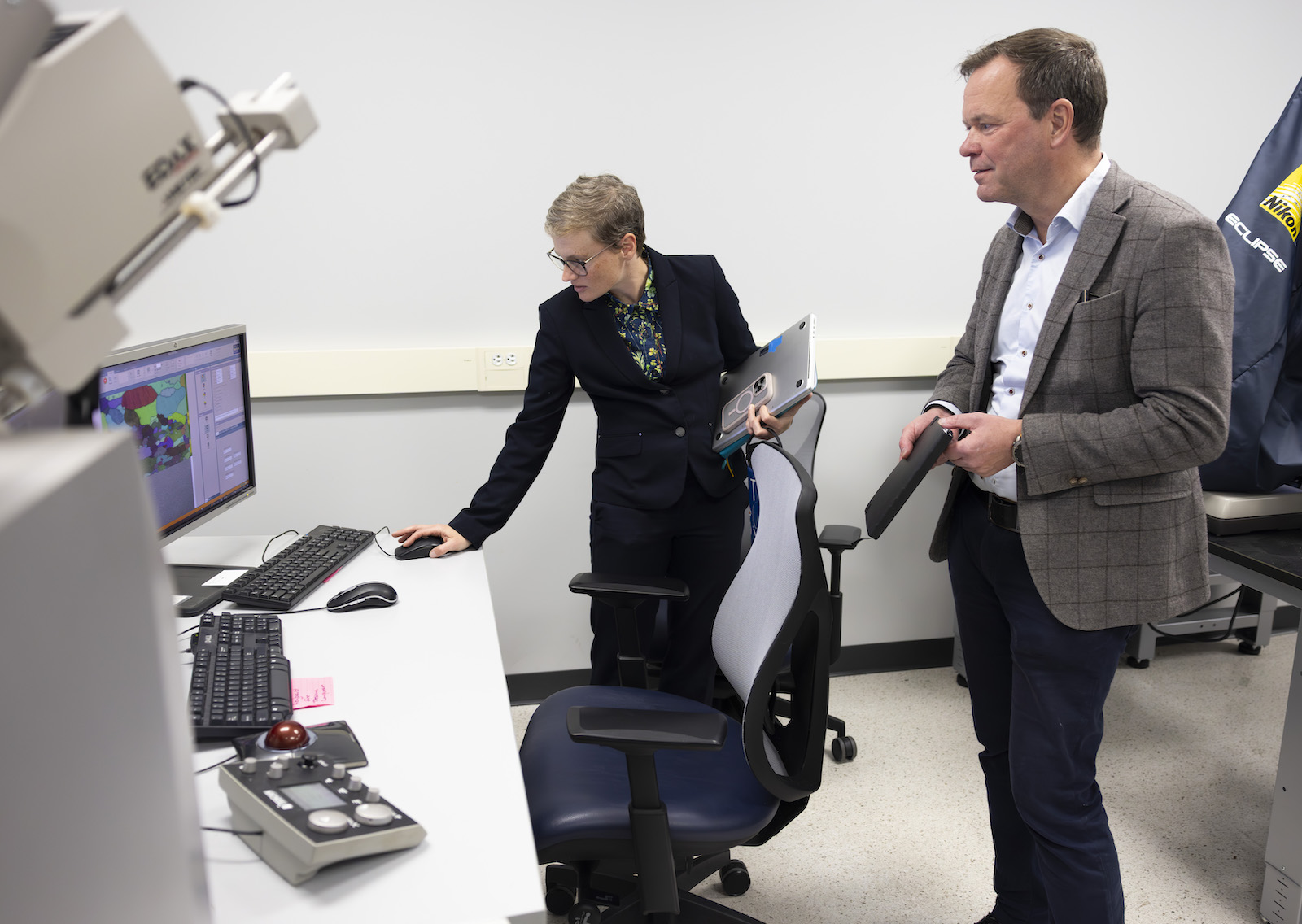
Hydro and the University of Michigan are collaborating to establish the Center for Recycling, Extrusion and Aluminum Technology (CREATe) partnership, under which Hydro will invest $2.5 million over five years to advance aluminum recycling and extrusion alloy development.
“Hydro was founded 120 years ago at the intersection of a commercial visionary and a brilliant researcher,” said Eivind Kallevik, president and CEO of Hydro. “That spirit still defines us. Industrial progress happens when industry and science work together to solve problems and develop new solutions. I look forward to following this collaboration between Hydro and the University of Michigan, and to seeing it drive new advances in aluminum recycling and alloy innovation.”
This collaborative approach and commitment to innovation is also recognized by Hydro’s academic partners. “This partnership brings together top minds in materials science and manufacturing to expand what’s possible in recycling aluminum, a metal that packs incredible strength into a lightweight form and has become one of the world’s most widely used engineering materials,” noted Karen A. Thole, the Robert J. Vlasic Dean of Engineering at the University of Michigan. “Both Michigan Engineering and Hydro see tremendous potential in this research and this region to shape a more resilient future together.”
Strengthening the U.S. Supply Chain
The aim of the CREATe partnership is to strengthen the U.S. supply chain through innovation. The initiative will focus on developing alloys that retain strength and performance across multiple recycling cycles, addressing key challenges such as iron based impurities. Three research teams will explore innovative approaches including electric current assisted intermetallic refinement, composition enhanced solidification and computational alloy design.
The University of Michigan described the three projects as follows:
One team will explore whether applying a low electric current to recycled aluminum while it’s solidifying can reduce the effect of the iron impurities that degrade performance in generations beyond the first. This team is led by Alan Taub, the Robert H. Lurie Professor of Engineering in materials science and engineering and mechanical engineering. Taub is also director of the U-M Electric Vehicle Center.
Another group will take aim at iron impurities with a chemical, rather than electrical approach. Led by Ashwin Shahani, associate professor of materials science and engineering, this team will explore whether adding chemical elements to alloys can reduce the impact of impurities. Also involved in this effort are Katsuyo Thornton, the L.H. and F. E. Van Vlack Professor of Materials Science and Engineering; and Daniel Cooper, associate professor of mechanical engineering. Shahani is also involved in the project Taub leads.
A third team will use advanced computational tools and experiments to design alloys and processes that can tolerate higher percentages of recycled material. John Allison, the William F. Hosford Collegiate Professor of Materials Science and Engineering, leads this project, which uses tools he honed at Ford before joining U-M. Allison will also pilot a research-focused master’s degree track to more closely connect the curriculum to industry needs.

Hydro’s Expanding U.S. Presence
Hydro’s research partnership with the University of Michigan builds on the company’s expanding U.S. footprint and commitment to innovation. Hydro is the largest producer of extruded aluminum in the U.S., with 22 manufacturing sites across 17 states, including 10 aluminum recycling facilities. The company contributes to the nation’s industrial strength and economic growth. The company supplies products to nearly every market sector, including automotive, transportation, building and construction, general engineering, defense, and consumer durables.
While Hydro has been present in the U.S. for several decades, many of its aluminum facilities have been supporting American industry for much longer. The company’s extrusion site in Cressona, Pennsylvania, was originally built in 1942 to support the war effort. Today, the facility is the largest of its kind outside of China, with more than 1,000 employees and 1.7 million sq ft under roof.
Over the past five years, Hydro has invested more than $1 billion to strengthen domestic manufacturing in the U.S., including a new recycling plant and R&D center in Cassopolis, Michigan, and a modern and advanced extrusion press with strengthened recycling capacity in Cressona, Pennsylvania, enhancing recycling, extrusion, and R&D capabilities.
Hydro’s global R&D network spans Norway, Germany, and the U.S., and includes in house scientists, university collaborations, and technology partners like Hycast. This integrated model ensures that innovation is rapidly translated from lab to production, enabling customers in automotive, transportation, consumer goods, and building systems to meet increasingly demanding performance and sustainability targets.
For example, the company’s technical teams in Cassopolis and Troy, Michigan, work closely with customers to develop specialized alloys designed for crash management and structural applications for the automotive industry. By combining deep materials expertise with next generation recycling technology, Hydro is helping customers across sectors reduce emissions, improve circularity, and future proof their supply chains.
